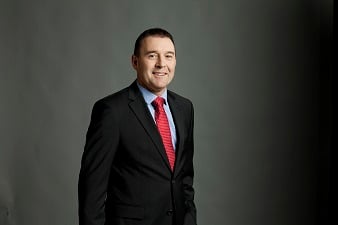
The CEO of Mercy Health talks about why equity and inclusion should be on every business leader’s agenda

Facing deregulation and unprecedented demand for services – it’s estimated that 500 new workers will need to be sourced each month for the next 10 years just to meet demand – employers in the aged care sector have their share of challenges.
Mercy Health, which has operations across the spectrum of health care in Australia, including aged & community care, and hospitals, is witnessing these upheavals first-hand.
For the past six years, the man leading the way forward has been Stephen Cornelissen, Group CEO, Mercy Health.
He said Australia is just at the start of an “exponential” increase in demand for aged care, which will continue for the next 25 years as baby boomers advance into older age.
“There’s no question employers in this space are under pressure,” he told HRD.
“We employ around 7,000 people and we care for around 190,000 people each year across 49 sites in Victoria, NSW, QLD, WA and ACT. We care for people from conception through to death and also families after death – so a big gamut.”
Anyone who has witnessed firsthand the tireless work of health professionals knows how important they are to Australian society, and Cornelissen is a passionate advocate of Mercy’s workers and the HR team who operate behind the scenes to ensure patients receive the best care.
“We have the most amazing workers and volunteers – I stand on the shoulders of giants,” he said.
Cornelissen is quick to make a distinction between ‘HR’ and the people, learning & culture team at Mercy.
“We think it’s important to call the team people, learning & culture because HR management is only one part of how you look after people in a workplace environment,” he said.
The organisation uses a business partner model, with HR business partners aligned to programs and divisions within the business. They are supported by the group HR function, which has centres of expertise including OD, IR, HR analytics, and so on.
“Our BP model is a partnership model. HR for us does not sit and rest with a HR manager; instead HR is something every single person in an organisation should be aware of and every single person with a line management report needs to be actively involved in.
“Our BPs are very much there as a development and supporting partner for managers and leaders to be able to deliver the HR function.”
While he acknowledges this approach is fairly commonplace, Cornelissen said there remains a tendency to go to HR “to resolve the hard problems” when in fact effective people management requires the individual manager to resolve the hard problem, with support from HR along the way.
“We very much work on that empowerment and support model. It doesn’t always work and sometimes HR becomes the fun police as well. But that’s making sure we set up an environment where our managers and leaders are well protected, well supported and able to deliver,” he said.
“Of course, everyone would always like more resources and we’re not for profit but we’re not for loss either – so we’re a for-purpose organisation and we work effectively and efficiently and cope as best we can.”
Cornelissen – who was a finalist in the HR Champion (CEO) of the Year category at the Australian HR Awards in 2015 – works closely with his HR team. He singles out his executive director of people, learning & culture, Kate McCormack, and his heads of OD and equity & inclusion as key touchpoints.
Cornelissen said equity & inclusion is both a passion for him personally, and a focus for the company at large.
“We cannot be an employer of choice – we can’t even be an industry representative – if we have a workforce consisting of more than 90% women and we don’t have a focus on equity & inclusion.”
Mercy is a Workforce Gender Equality Agency certified organisation, and Cornelissen himself is an ambassador for gender equity & inclusion.
“We go on a person’s skill and ability and I see that constantly in our recruitment efforts; gender doesn’t even rank in our considerations and that’s an amazing thing for an organisation to boast,” he said.
“We have 50% women participating on our board, we have 50%+ women in our leadership team, and I can sit here and say it’s because we’re great – but really so we should be at this level if we have 90% of our workforce being women – it only makes sense.”
That said, he suggests there are looming “big questions” for all organisations, and society as a whole, when it comes to gender equality – particularly when it comes to the role of men. “I feel there’s a bit of an identity crisis happening now. There’s this gap between what our parents did and what we have to do today and where the value comes from.
“It’s not just to do with the gender balance in the workplace but it’s also to do with parenting. It’s a really big one – the role of the father today is so different to what has been the role in the past. Some men are struggling with what it means if they’re not the primary breadwinner anymore. What does it mean for their family?
“These are big questions and good questions that are coming up at last because we’re getting a balance. These issues sat with women for so long and it’s a really exciting time today because we have that balance emerging.”